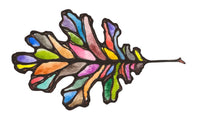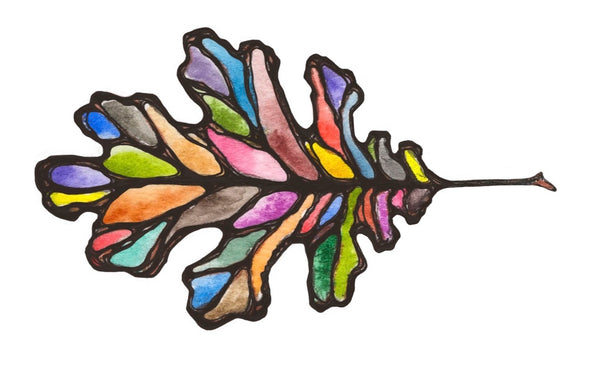
How To Make Your Own Watercolor Swatches (Free Template Download!)
There are a variety of different ways to swatch your colors, which I cover in this post. In this post, I am going to go over how to combine a few of those swatches into what I call a Combination Swatch. It contains a lot of information about each color, and is wonderful fun to create.
What Is A Combination Swatch?

A combination swatch is broken up into 5 sections, which are painted in layers, each of which is allowed to dry before the next is applied. First all 5 sections are painted in a diluted layer, then 4 sections are painted with a layer at 75% dilution, next 3 sections are painted at 50% dilution, until the last single section is painted at 100% paint strength. After all layers are dry, a black line is drawn over the top. This line compared to the painted-over line shows transparency of the swatched color. Last, using the < & > symbols on the swatch to guide your line, you will lift a line of color, which will indicate how staining the swatched color is.
This style of swatch packs a ton of information into one little rectangle!
Supplies You Will Need

- Free Download
- Watercolor Paper, cut to 8 1/2" x 11" (for your printer)
- Scissors or utility knife & straight edge
- Artist or washi tape
- Cup of water
- Watercolors
- Flat brush
- Round brush
- Lifting brush (if you don't have one, just use the very tip of your round brush)
- Waterproof marker (such as Sakura Identipen)
Steps To Create Your First Swatch
Step 1:
Download this free template. Print the instructions on normal cartridge paper, and print the blank template onto watercolor paper. (Make sure to print on the more textured side of the paper!). Read through the instructions.
Step 2:
Then use a straight edge to either tear or cut your template along the dotted lines into individual swatches. Grab one swatch card, then stack the rest to the side. Keep you instructions at hand for easy reference.
Step 3:
Tape down the edges of the swatch card onto a waterproof surface. Use the edges of the printed box on the swatch as your guide. Tip: Use your marker to make marks on the tape where the sections are indicated on the swatch - this will help guide you as the layers get darker!

Step 4:
Use your flat brush to wet the entire swatch surface - all five sections. Then using your round brush apply your color, diluted to almost complete transparency, evenly over the paper surface. Let dry.

Step 5:
Use your flat brush to wet the left-most 4 sections. Then, use your round brush to apply your color to that same area, diluted by about 75% by appearance. Let dry.

Step 6:
Use your flat brush to wet the left-most 3 sections. Then, use your round brush to apply your color to that same area, diluted by 50% by appearance. Let dry.

Step 7:
Use your flat brush to wet the left-most 2 sections. Then, use your round brush to apply your color to that same area, diluted by only 25% by appearance. Let dry.

Step 8:
Use your round brush loaded with color at full strength and apply it to the final left-most section. You should now see a step by step value range of your color. Let dry. Remove tape.

Step 9:
Use your black permanent marker and your straight edge to connect the black lines below the painted-over line. This line will provide a comparison to the printed line. The purpose is to demonstrate the transparency of the swatched color.

Step 10:
Using your lifting brush, dampen it slightly. Line up your straight edge to connect the > & < symbols on either side of your swatch. Then run your lifting brush along the straight edge. Dab it off, then run it along the edge. Repeat this, being careful not to get the paper wet, until you have lifted away a line of color. Let dry. This reveals how staining the swatched color is.

That's it!
You can now understand this colors value range, transparency, and how staining it is. You will also get to peek at weather it granulates or variegates, see its hue range, and more!
If you do this with each of your colors, you will be creating a mini visual reference library for your watercolor practice. You will also have a much better idea of how each of your colors handle and how to use them to their fullest potential.
In short, this is one of the very best ways to get to know your colors.
Hope you enjoy this one! And please let me know in the comments if you have any questions.


